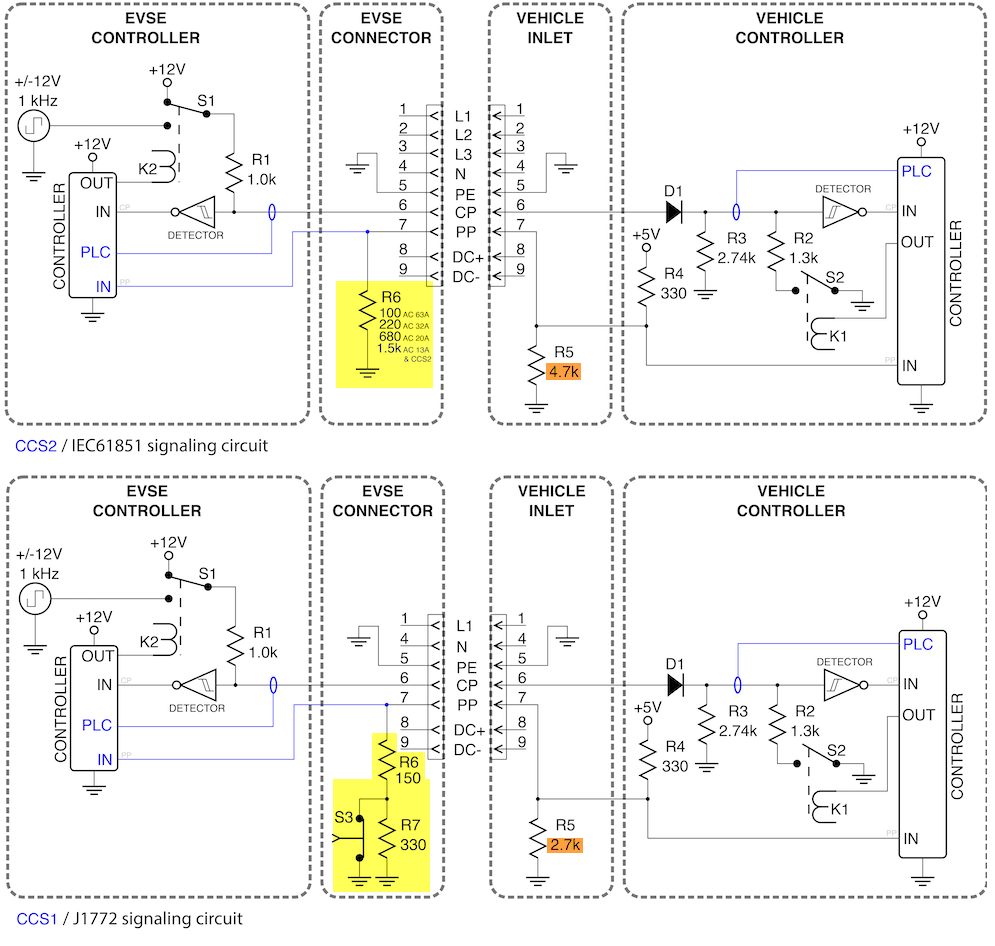Re: Open source CCS using AR7420
Posted: Sun Aug 06, 2023 9:42 pm
Regarding the capacitor and resistor, added in the FAQ: https://github.com/uhi22/pyPLC#q6-how-t ... -cp-and-pe
openinverter Community
https://openinverter.org:443/forum/
Excellent! This helped me move forward. I updated the config/ini file to reflect the changes mentioned above and was able to get past these errors. Now at the next step where the EVSE (simulated is trying to query the hostname and then determine the IPv6 address from it)
This seems to be a CCS2-centric statement?FAQ wrote:Q1: What is the purpose of the PP pin, and do I need to connect it?
The car uses the ProximityPilot (or PlugPresent) to detect, that a plug has been inserted. We need to connect a 1.5kohms resistor between the PP and the ProtectiveEarth (PE) [ . . . ]

Good point. These lines are a left-over of some experiments, and not needed. I kicked them out now: https://github.com/uhi22/pyPLC/commit/7 ... 866ace461a
Good point. I was not aware of the differences in CCS1, and updated the FAQ now.asavage wrote: ↑Mon Aug 07, 2023 12:31 am Question about the FAQ: regarding https://github.com/uhi22/pyPLC/blob/mas ... -is-the-cp
This seems to be a CCS2-centric statement?
Sure does! Thanks. The EVSE (simulated) was able to open a listener on the port and the conn to PEV (simulated) was established as seen in the snapshot below. One thing to note - I am using a real TP Link modem connected to the Ethernet port of the Pi and *once these messages get exchanged I notice my modems lose connectivity (based on the LED light status of the link). I've not yet updated the firmware and PIB files so these modems are in their normal modes HomePlug AV mode, as they're not rewired yet but connected to my home network and going over the home electrical/powerline network.uhi22 wrote: ↑Mon Aug 07, 2023 2:22 am Good point. These lines are a left-over of some experiments, and not needed. I kicked them out now: https://github.com/uhi22/pyPLC/commit/7 ... 866ace461a
Does this solve the issue?
I was able to move much further and also config 2 TP link modems from the 4010 kit - one as EVSE and other as PEV using the docs and links from your github as well as detailed post from @asavage.
thank you! I was also able to validate across 2 TPlink modems and they did come up, all 3 LEDs on both the modems were on. How do I ensure that the modems are config correctly? and the correct PIBs for EVSE and PEV mode are loaded up. Because next step would be to remove the AC ckts from the modems and power them via DC (5-12V) and if there's no issue hacking up the h/w will move to validating with the real EV/Chevy Bolt that supports CCS1 charger (and pyPlc in EVSE mode).uhi22 wrote: ↑Mon Aug 07, 2023 10:44 pm Perfect, thanks for testing and proposing the bugfix. I pushed an update: https://github.com/uhi22/pyPLC/commit/c ... 307c556c13
FYI if the tcp connection is broken (closed or reset) at any point during a session, the session will end. You can try to reconnect, but should start at the beginning.
In a former project we had good success with Bourns Gas Discharge Tubes (GDTs) for IEC 61000-4-5 surge tests. The TVS diodes alone did not provide sufficient protection and we found that in overvoltage situations, they'd just get reeeeeeeally hot and eventually start to smoke.
That's what seems to be happening. I've not yet tried it with a real EV but with the simulator I've stopped the session in between to create failure scenarios that the EVSE side restarted the conn and goes back to listen mode. Underlying handshaking needs to be redone completely anyways at L1 and L2 but since the EV/client side is initiation the conn it would get back to restart per my understanding. The issue was the server side was throwing an exception hence the EVSE side was abruptly ending this small change will allow it to keep it running, waiting for new connections.CCSknowitall wrote: ↑Thu Aug 10, 2023 4:31 am FYI if the tcp connection is broken (closed or reset) at any point during a session, the session will end. You can try to reconnect, but should start at the beginning.
Stations that support also CHAdeMO are more likely to go down to ~150V. I wouldn’t trust anything below 100V despite CHAdeMO “requiring” to 50V.
Sure, I'll do another run later today/tomorrow and get that data out. Have also asked some friends if I could use their Tesla Model S and Kia EV6 to try this same experiment. Will send out the logs/results in next couple of days...